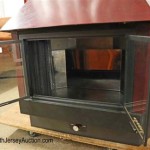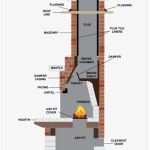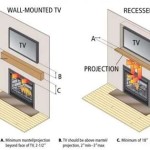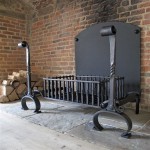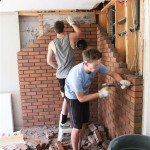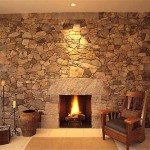Essential Aspects of Gas Fireplace Vented Through Wall
Ventless gas fireplaces have gained popularity over traditional fireplaces due to their ease of installation and efficiency. They eliminate the need for a chimney, making them ideal for homes or apartments with limited space. However, if you are considering installing a ventless gas fireplace, there are a few essential aspects to keep in mind to ensure safety and proper operation.
**Carbon Monoxide Emission:** Ventless gas fireplaces do not require a chimney to exhaust combustion gases. As a result, they have the potential to release carbon monoxide (CO) into the living space. It is crucial to install a carbon monoxide detector in the same room as the fireplace and maintain it regularly. A high concentration of CO can lead to health risks, including headaches, nausea, and even death.
Ventilation Requirements: While ventless gas fireplaces do not require a traditional chimney, they still need adequate ventilation to supply combustion air and remove excess moisture. According to the manufacturer's instructions, the fireplace should be installed in a well-ventilated area with a sufficient air supply. Poor ventilation can lead to combustion problems and the release of harmful gases.
Installation Considerations: Ventless gas fireplaces must be installed by qualified professionals to ensure proper operation and safety. The installer should follow the manufacturer's guidelines and local building codes to ensure the unit is securely fastened, properly fueled, and has adequate ventilation. A poorly installed fireplace can pose significant safety hazards.
Maintenance and Inspection: Regular maintenance is essential to ensure the safe and efficient operation of a ventless gas fireplace. It is recommended to have the fireplace inspected and serviced annually by a qualified technician. The technician can inspect the fireplace for any signs of wear or damage, clean the burner and pilot light, and adjust the gas settings as needed.
Fuel Source: Ventless gas fireplaces typically operate on natural gas or propane. It is important to ensure that the fireplace is compatible with the type of fuel available in your area. Natural gas is more common and generally less expensive than propane. However, propane tanks can be used in areas where natural gas is not available.
In conclusion, installing a ventless gas fireplace vented through the wall requires careful consideration of several essential aspects. By ensuring proper ventilation, following installation guidelines, maintaining the fireplace regularly, and understanding the fuel source, you can enjoy the warmth and ambiance of a ventless gas fireplace while prioritizing safety and well-being.
Gas Fireplace Venting Explained Heat Glo
Gas Fireplace Venting Explained Heat Glo

What Are The Best Ways To Vent A Gas Fireplace Zoroast

Icc Direct Vent Gas Venting Insulated Wall Thimble

Guide To Direct Vent Gas Fireplaces

Solas Twenty6 Wall Mounted Direct Vent Gas Fireplace Mazzeo S Stoves Fireplaces

How To Find The Most Efficient Direct Vent Gas Fireplace For Your Next Project

Fire Ribbon Direct Vent Slim Gas Fireplace Spark Modern Fires

Fireplace Cover To Keep Cold Air Out

Power Vent Flare Fireplaces

